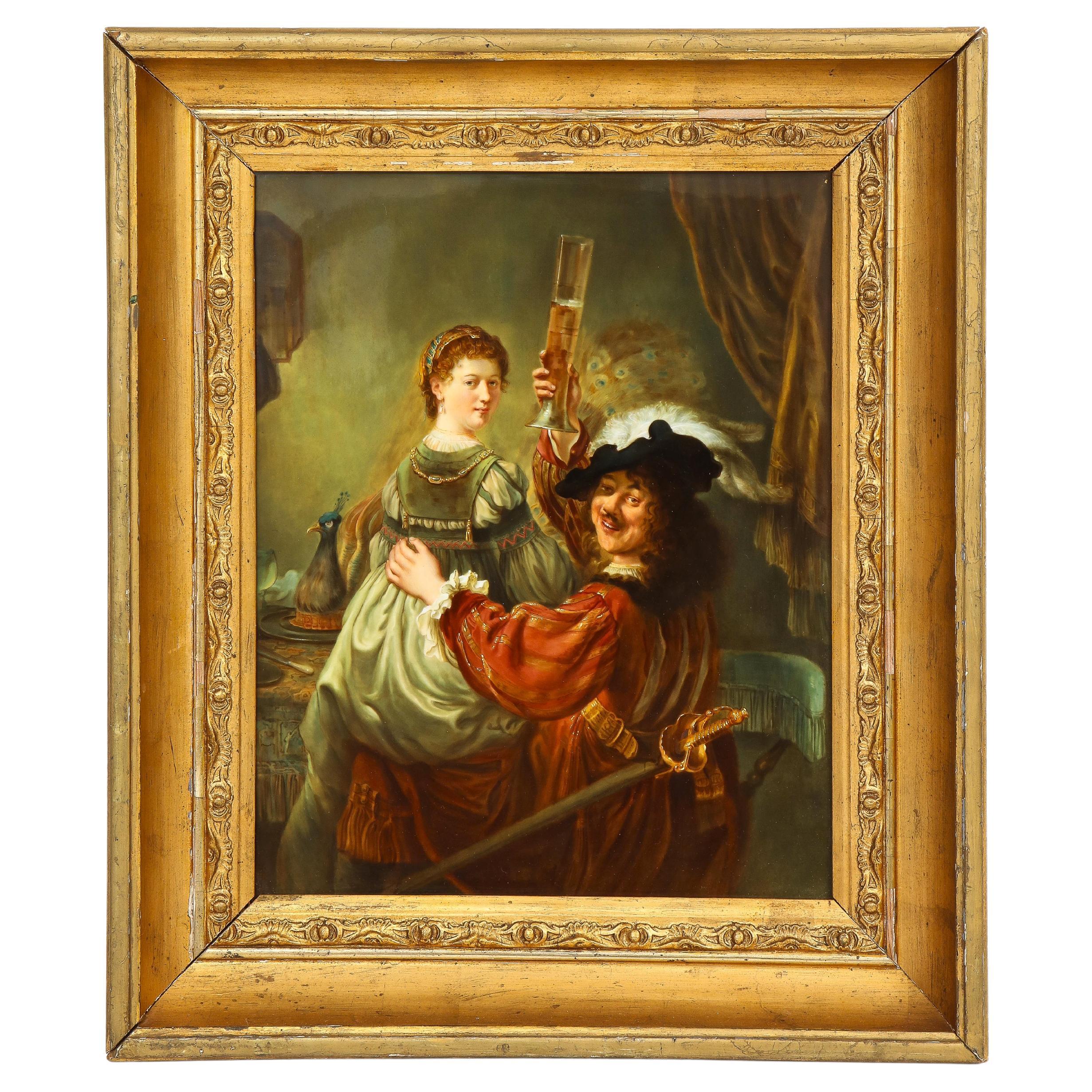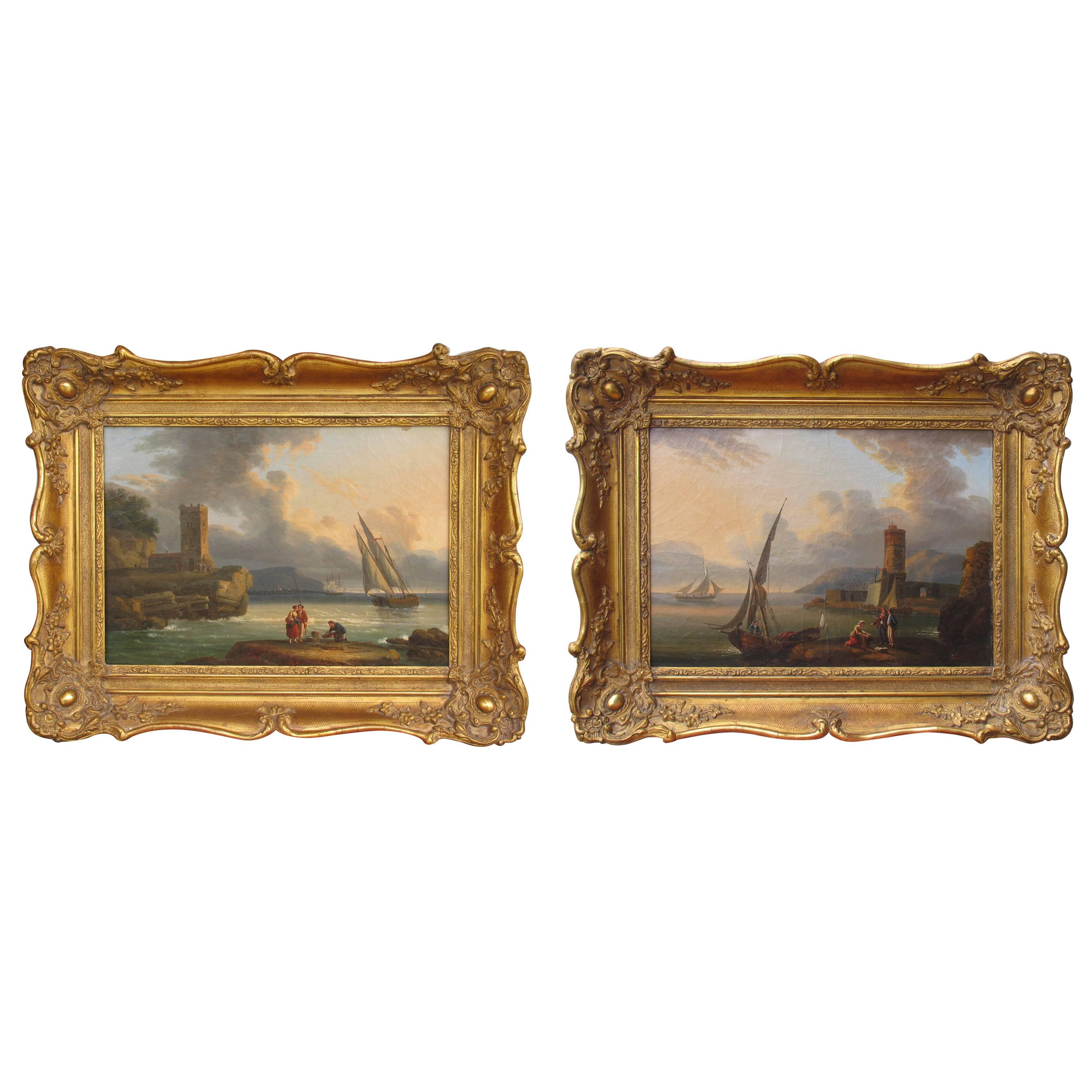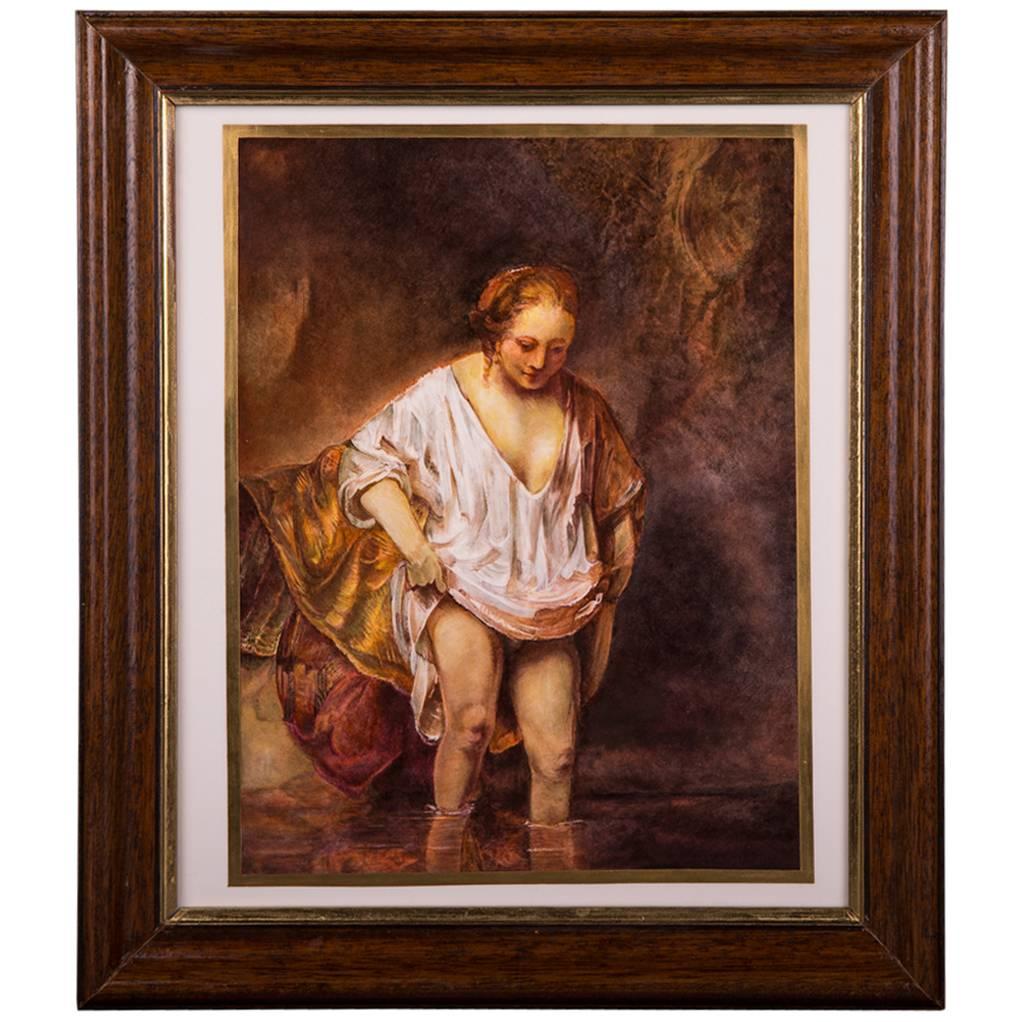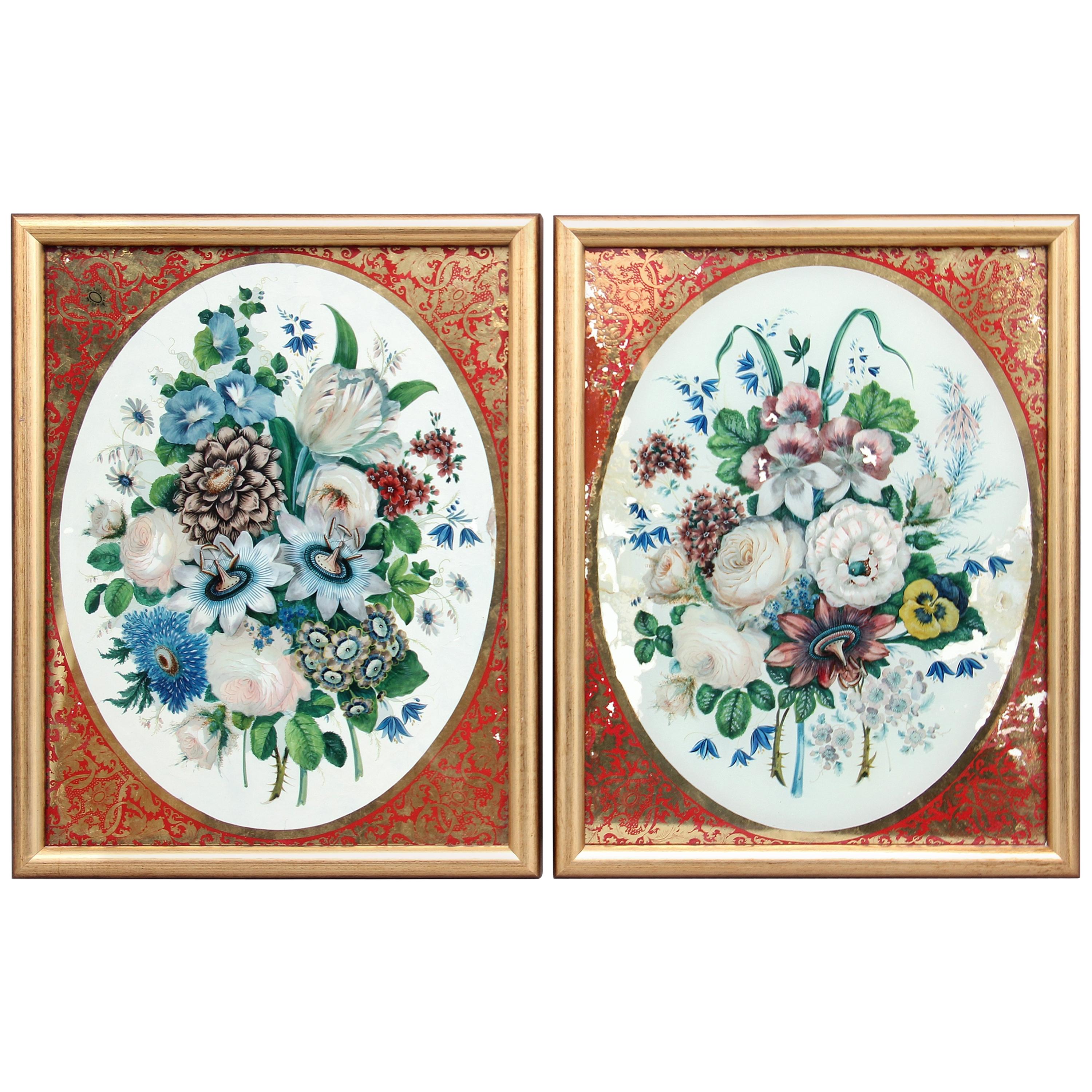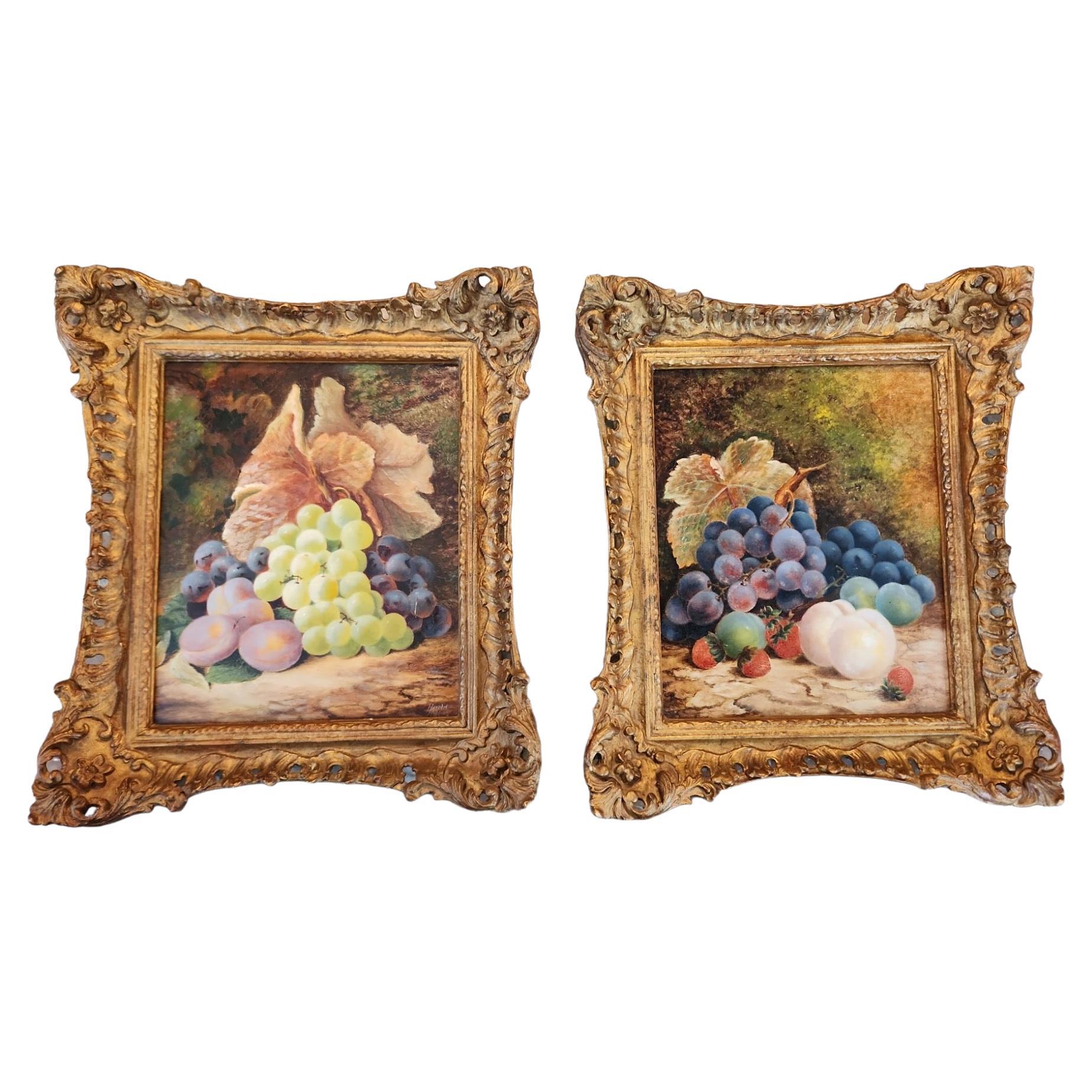Items Similar to Pair of 19th Century Rembrandt Follower Painting
Want more images or videos?
Request additional images or videos from the seller
1 of 13
Pair of 19th Century Rembrandt Follower Painting
About the Item
Pair of important oil paintings by a follower of Rembrant
The two works represent two celebrated paintings : "The Anatomy Lesson of Dr. Nicolaes Tulp" and "The Sampling Officials."
Very rare is the representation of these two true icons of world art and very rare is their technique on convex supports.
This pair of painting, never before on the market, comes from an important European private collection.
They are beautified by a pair of impressive XVII Century antique frames in ebonized and gilded wood, in excellent condition.
Every item of our Gallery, upon request, is accompanied by a certificate of authenticity issued by Sabrina Egidi official Expert in Italian furniture for the Chamber of Commerce of Rome and for the Rome Civil Courts.
Rembrandt Harmenszoon van Rijn ( 1606 – 1669), usually simply known as Rembrandt, was a Dutch Golden Age painter, printmaker, and draughtsman. An innovative and prolific master in three media,he is generally considered one of the greatest visual artists in the history of art.
“The Anatomy Lesson of Dr. Nicolaes Tulp”
This is a 1632 oil painting on canvas by Rembrandt housed in the Mauritshuis museum in The Hague, the Netherlands. It was originally created to be displayed by the Surgeons Guild in their meeting room.
The painting is regarded as one of Rembrandt's early masterpieces.
In the work, Nicolaes Tulp is pictured explaining the musculature of the arm to a group of doctors. Some of the spectators are various doctors who paid commissions to be included in the painting. The painting is signed in the top-left hand corner.
The event can be dated to 31 January 1632: the Amsterdam Guild of Surgeons, of which Tulp was official City Anatomist, permitted only one public dissection a year, and the body would have to be that of an executed criminal.
Anatomy lessons were a social event in the 17th century, taking place in lecture rooms that were actual theatres, with students, colleagues and the general public being permitted to attend on payment of an entrance fee. The spectators are appropriately dressed for this social occasion. It is thought that the uppermost (not holding the paper) and farthest left figures were added to the picture later.
Each of the men included in the portrait would have paid a certain amount of money to be included in the work.
Rembrandt's anatomical portrait radically altered the conventions of the genre, by including a full-length corpse in the center of the image and creating not just a portrait but a dramatic mise-en-scène.
The French art historian Jean-Marie Clarke suggests that the navel of the corpse has the shape of a capital R and connects this observation to the fact that Rembrandt worked intensively on his signatures in 1632, using three types consecutively before settling on the final, first name form in 1633.
“The Sampling Officials”, also called Syndics of the Drapers’ Guild is a 1662 oil painting by Rembrandt.
It is currently owned by the Rijksmuseum in Amsterdam.
It has been described as his "last great collective portrait".
The men are drapers who were elected to assess the quality of cloth that weavers offered for sale to members of their guild.
The Dutch word staal means 'sample' and refers to the samples of cloth that were assessed.
The inspectors used pliers to press the seals of their city and guild into penny-sized slugs of lead that were specially affixed to record the results of the inspection.
There were four grades of quality, the highest was indicated by pressing four seals and the lowest by pressing only one.
The dimensions are frame included.
This artwork is shipped from Rome. Under existing legislation, any artwork in Italy created over 70 years ago by an artist who has died can requires a license for export regardless of the work’s market price. The shipping may require additional handling days to require the license according to the destination of the artwork.
- Similar to:Rembrandt van Rijn (Artist)
- Dimensions:Height: 11.03 in (28 cm)Width: 12.6 in (32 cm)Depth: 1.97 in (5 cm)
- Sold As:Set of 2
- Style:Baroque (In the Style Of)
- Materials and Techniques:
- Place of Origin:
- Period:
- Date of Manufacture:1890 ca
- Condition:Wear consistent with age and use. Minor fading.
- Seller Location:Roma, IT
- Reference Number:1stDibs: LU4827236124912
About the Seller
5.0
Vetted Seller
These experienced sellers undergo a comprehensive evaluation by our team of in-house experts.
Established in 2005
1stDibs seller since 2019
71 sales on 1stDibs
Typical response time: 1 hour
- ShippingRetrieving quote...Ships From: Rome, Italy
- Return PolicyA return for this item may be initiated within 14 days of delivery.
More From This SellerView All
- 19th Century Enrico Coleman Signed PaintingBy Enrico ColemanLocated in Roma, ITAn important painting by one of the most representative Italian artists of the 19th century, Enrico Coleman. It depicts a village most probably from Lazio, perhaps a glimpse of Anticoli Corrado, the town famous for the attractiveness of its models, or rather Subiaco, his mother's birthplace. The atmosphere here is typical of the XXVs of the Roman Campagna of which Enrico Coleman was probably the most important exponent. The reason for this can also be seen in this small masterpiece that captures the washerwomen in their occupation immersed in a poetically bucolic atmosphere; a sky of unparalleled blue stands out in the background. Signed below on the right This painting, never before on the market, comes from an important Italian private collection and is beautified by an impressive antique frame in gilded wood, in almost perfect condition. Every item of our Gallery, upon request, is accompanied by a certificate of authenticity issued by Sabrina Egidi official Expert in Italian furniture for the Chamber of Commerce of Rome and for the Rome Civil Courts. Oil painting on paper Enrico Coleman (21 or 25 June 1846 – 14 February 1911) was an Italian painter of British nationality. He was the son of the English painter Charles Coleman and brother of the less well-known Italian painter Francesco Coleman. He painted, in oils and in watercolours, the landscapes of the Campagna Romana and the Agro Pontino; he was a collector, grower and painter of orchids. Because of his supposedly Oriental air, he was known to his friends as "Il Birmano", the Burmese. Enrico Coleman was born in Rome in June 1846. He was the fourth child of the English painter Charles Coleman, who had come to Rome in 1831 and settled there permanently in 1835, and of a famous artist's model from Subiaco, Fortunata Segadori (or Segatori), whom he had married in 1836. Coleman was initially taught by his father, did study at the Accademia di San Luca in Rome. Following the mocking reception of Una mandria di bufali nelle paludi pontine, a naturalistic painting of a herd of buffaloes in the Pontine marshes, at the International Artist's Club in 1872,he reportedly began to paint genre subjects in the manner of the then-fashionable Mariano Fortuny, although no works showing the influence of the Spanish painter are known. At the instigation of Nino Costa, he soon returned to the depiction of the people, animals and landscapes of the Campagna Romana and the Agro Pontino. Coleman was lover of orchids, which he painted, collected and cultivated. An 1894 watercolour of orchids is in the Galleria Comunale d'Arte Moderna e Contemporanea in Rome. Coleman had a remarkable collection of indigenous orchids, which he cultivated himself in his house at 6 via Valenziana and the botanist Fabrizio Cortesi named the hybrid Orchis x colemanii Cortesi in his honour. In 1875, Coleman was among the founding members of the Società degli Acquarellisti, the Roman society of watercolourists; he participated in the society's first exhibition in 1876, and continued to exhibit with them until 1907. In 1878 he was elected an honorary member of the Société Royale Belge des Aquarellistes, the Belgian royal society of watercolourists, with which he participated in the Salon de Paris in 1879 and to the 4th Esposizione Nazionale di Belle Arti, or national fine art show, of Turin in 1880, and to that of Milan in the following year; he showed works in London in 1882 and in Rome in 1883. In 1885, Coleman was among the founding members of the group In Arte Libertas, of which Nino Costa was the leading force and the other founding members were Vincenzo Cabianca...Category
Antique Late 19th Century Italian Grand Tour Paintings
MaterialsWool, Canvas, Paper
- Ruggero Panerai 19th Century Signed PaintingBy PaneraiLocated in Roma, ITAn important oil on panel painting by the great Tuscan artist Ruggero Panerai. It depicts one of his favourite and most successful subjects, wild horse...Category
Antique 1890s Italian International Style Paintings
MaterialsWood
- Karel Klinkenberg 19th Century Dutch Signed PaintingBy Johannes Christiaan Karel KlinkenbergLocated in Roma, ITBeautiful and important painting by the great Dutch artist Karel Klinkenberg who lived at the turn of the 19th and 20th centuries. It depicts a canal in Utrecht depicted with his usual precision attentive to every detail. Another characteristic of our painter, is the evocative power of the romantic and gentle atmosphere he always manages to convey. Signed at lower left and signed and inscribed on the reverse. Johannes Christiaan Karel Klinkenberg (1852, The Hague – 1924, The Hague), was a 19th-century Dutch painter specialized in views of the town especially Amsterdam and Utrecht as our painting. Biography According to the RKD he was a pupil of Christoffel Bisschop (1828-1904) and Louis Meijer, and became a member of the Pulchri studio who later won many prizes. A street is named after him in the neighborhood of streets named after 19th and 20th century Dutch painters in Overtoomse Veld-Noord, Amsterdam. This painting, never before on the market, comes from a private collection Every item of our Gallery, upon request, is accompanied by a certificate of authenticity issued by Sabrina Egidi official Expert in Italian furniture for the Chamber of Commerce of Rome and for the Rome Civil Courts. This artwork is shipped from Rome. Under existing legislation, any artwork in Italy created over 70 years ago by an artist who has died can requires a license for export regardless of the work’s market price...Category
Antique Late 19th Century Dutch International Style Paintings
MaterialsCanvas
- 19th Century Signed French Still LifeLocated in Roma, ITImportant painting "Still life" oil on canvas of the second half of the 800 by the great artist Aémile-Auguste Vivier-Deslandes called "Baron Deslandes". Of rare intensity and beauty...Category
Antique 1880s French Romantic Paintings
MaterialsCanvas
- 19th Century Neapolitan Panting by Carlo BrancaccioBy Carlo BrancaccioLocated in Roma, ITAn important painting by one of the greatest Italian artists of the 19th century, Carlo Brancaccio. He was one of the most important exponents of the Posillipo School and shows all h...Category
Antique Late 19th Century Italian Grand Tour Paintings
MaterialsCanvas, Wood
- Pietro Novelli 17th Century Italian Religious PaintingBy Pietro NovelliLocated in Roma, ITImportant oil on canvas painting depicting Saint Peter in prison being freed by the Angel. The original is kept at the Regional Gallery of Palazzo Abatellis in Palermo. It comes fro...Category
Antique 17th Century Italian Baroque Paintings
MaterialsBronze
You May Also Like
- 19th C. Meissen Porcelain Plaque Depicting Rembrandt and Saskia in the TavernBy Meissen Porcelain, Rembrandt van RijnLocated in New York, NYAn incredible and very rare 19th Century Meissen porcelain plaque depicting Rembrandt and Saskia in the Tavern. Meissen plaques are incredibly rar...Category
Antique 1860s German Baroque Porcelain
MaterialsPorcelain
- 18th-19th Century Pair of PaintingsBy Claude-Joseph VernetLocated in Belmont, MAUnknown artist, in the manner of Claude Joseph Vernet (1714-1789), "Views of the Mediterranean Coast", France, 18th-19th century, oil on canvas (lined), measuring size with frame: 18...Category
Antique Early 1800s French Baroque Paintings
MaterialsCanvas
- 20th Century Great KPm Berlin Painting Plaque after RembrandtBy Rembrandt van RijnLocated in Berlin, DEUnique! Huge KPM Berlin image plate after Rembrandt "The Bathers" Motif according to one of the most famous painters of the 17th century. Picture plate "The Bathers" by Rembrandt...Category
20th Century German Paintings
MaterialsPorcelain
- 19th Century Barock Style Oil Painting Saskia Smiling with Feather BarBy Rembrandt van RijnLocated in Berlin, DESaskia smiling with feather bar (circa 1633). Oil on canvas. Exceptionally beautiful copy after Rembrandt, back titled - copy after No. 1556, the royal pai...Category
Antique 19th Century German Baroque Paintings
MaterialsCanvas
- Pair of Early 19th Century PaintingsLocated in Martlesham, GBA lovely pair of early 19th century paintings of flowers within a gilt and red border, some paint loss and in later frames but very decorative, circa 1820.Category
Antique 1820s English Regency Paintings
MaterialsGlass
- Pair of 19th Century Oil PaintingsLocated in Los Angeles, CAIn excellent condition with original Giltwood frames... you can tell from the back. One painting is signed. Hard to read: Harold Holding?? Paintings look very real.Category
Antique 19th Century English Neoclassical Paintings
MaterialsCanvas, Giltwood, Paint
